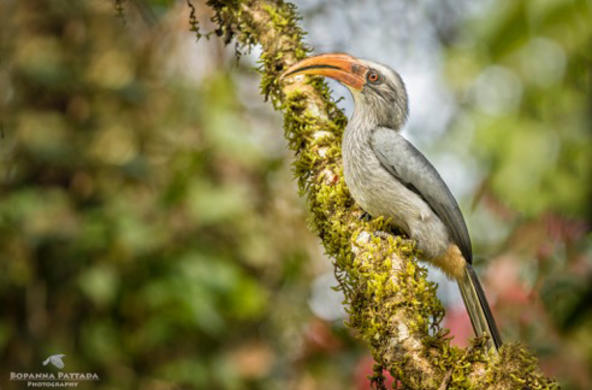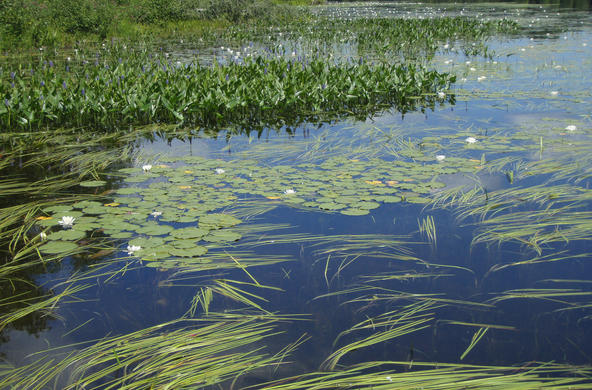“WHO looks upon a river in a meditative hour and is not reminded of the flux of all things?”
Emerson asked that in his essay “Nature.” For me, it wasn’t a meditative hour so much as half-hour increments spent on spring afternoons at the Fall Kill, a tributary of the Hudson River. In addition to pondering the notions of changeability and continuity that watching a stream flow into a river tend to prompt, I was also counting and weighing glass eels, tiny transparent fish only two or three inches long that enter the tributaries of the river each spring.
Which is to say, I was practicing something called citizen science, loosely defined as scientific research in which amateurs help experts gather data.
Eels are tiny envoys from the realm of the inconceivable. Scientists have never been able to document their mating or birth in the North Atlantic’s Sargasso Sea, nor do they know what governs their voyage to the coast’s freshwaters. In recent years, their population in the Hudson has declined, possibly because of contaminants in the water, dams, overfishing, parasites, habitat loss, hydropower projects or some other yet unknown factor.
It is a change the Atlantic States Marines Fisheries Commission would very much like to understand. To help them do so, the New York State Department of Environmental Conservation Hudson River Estuary Program and the National Estuarine Research Reserve System have established a juvenile eel monitoring program, in which I participated in 2011 and will again this year. Each spring, starting April 1, high school kids, college interns, retirees and pretty much anyone else with the time and inclination to put on waders can step into a frigid stream, check the net that’s been installed there to catch the eels, and work with scientists and educators to help gather data.
We volunteers are continuing the traditions of generations of amateur naturalists who have observed and documented the events of the natural world. But several factors distinguish today’s citizen scientists from their predecessors.
The first is a growing sense of urgency. Whether they are worried about climate change, population growth or habitat loss, many ordinary people are motivated by a powerful need to engage with events of the natural world. Add to that a host of new technologies including GPS, digital photography, interactive Web sites and mobile phone apps that allow for the efficient collection and dissemination of data. Finally, at a time when the scientific community is ever more financially stretched, using volunteers to help collect data is good sense.
Citizen scientists are now at work in every season, in every part of the country, on land or water. The Midwinter Bald Eagle Survey invites volunteers in the lower 48 states to help count bald eagles during the first two weeks of January; JellyWatch asks volunteers to report information about jellyfish, squid, red tides and other unusual marine organisms; and volunteers in the Monarch Program learn to tag butterflies to better understand their migration patterns and how they are affected by climate change and human encroachment. These are just three of hundreds of efforts.
The volunteers may be driven by a general interest in conservation; they may be interested in monitoring conditions in their local communities that could have public health consequences; or they may just want to get outside, searching for some connection to the place where they live. Spending time in the natural world has always brought me a sense of restoration, but I have found that that feeling goes much deeper when it furthers the partnership between scientific research and public knowledge. Certainly that happened in my outings in assorted participatory research programs in the Hudson Valley.
Surveying vernal pools to document amphibian life was a regenerative way of witnessing spring, but the experience grew in meaning when its results had a tangible effect on how local planners considered the value of open space. Taking inventory of the Hudson River’s water celery beds (a type of subaquatic vegetation) was a good excuse to spend a summer morning in a kayak, but when the numbers reflected measurable facts about water quality, my connection to the river became stronger.
All of these endeavors in citizen science may also be steps toward what William H. Schlesinger, president of the Cary Institute of Ecosystem Studies, calls “translational ecology,” a response to the need for ecologists to find ways to deliver their information to the public and to policy makers, and to familiarize ordinary citizens with scientific research, so they can better grasp its implications and imperatives.
Besides, as so often happens in the natural world, when you learn something about the immediate subject at hand, a larger lesson plan creeps in. As Chris Bowser, an environmental scientist and educator who manages the Hudson River Eel Project, observed, “One of the great things about studying eels is that by paying attention to eels, we are paying attention to the entire ecosystem. Eels rely on oceans, estuaries, streams and entire watersheds. They’re found in farm ponds and in city creeks. They are the perfect ambassador for the entire ecosystem because they live the interdependence that environmental scientists like to point out.”
For me, that’s reason enough to look to the eels this April, to put on the waders and step into the icy stream. Reason enough to check the net, to count the eels and weigh them. Reason enough to note cloud cover, precipitation, the temperature of the air and water, the clarity and conditions of the tide.
And while observing and documenting these data points, I will also witness the more elusive mysteries of eel migration. Though completely translucent, glass eels reveal little about themselves. If you look closely, you can see their tiny eyeballs and hearts. But counting them is like trying to count something that is nearly invisible. How is it possible to hold something in the palm of your hand and still know so little about it?
Considering this small fish with such giant inscrutability, I wonder if for all the reasons there are to count eels — or bald eagles or jellyfish or monarch butterflies — it is this convergence of the known and the unknown that most engages the human imagination. And I am amazed anew at the paradox that our sense of place is derived from everything we know — along with everything that causes us to wonder.





